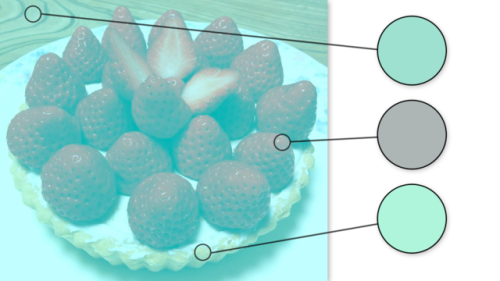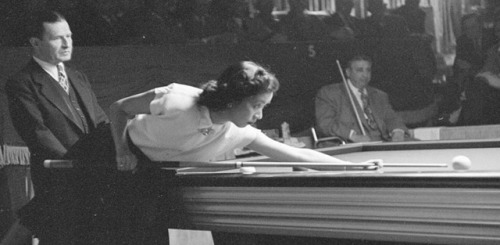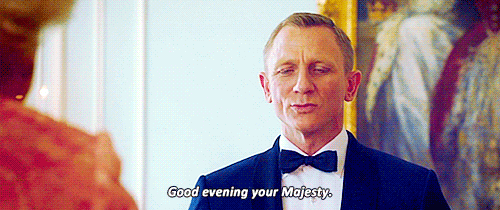Hey Resident Neuroscientist @sixpenceee, Wanna Explain Why The Strawberries Look Red?

Hey resident neuroscientist @sixpenceee, wanna explain why the strawberries look red?
More Posts from Philosophical-amoeba and Others

(Image caption: The maturation of fibres of a brain structure called the arcuate fascicle (green) between the ages of three and four years establishes a connection between two critical brain regions: a region (brown) at the back of the temporal lobe that supports adults thinking about others and their thoughts, and a region (red) in the frontal lobe that is involved in keeping things at different levels of abstraction and, therefore, helps us to understand what the real world is and what the thoughts of others are. Credit: © MPI CBS)
The importance of relating to others: why we only learn to understand other people after the age of four
When we are around four years old we suddenly start to understand that other people think and that their view of the world is often different from our own. Researchers in Leiden and Leipzig have explored how that works. Publication in Nature Communications on 21 March.
At around the age of four we suddenly do what three-year-olds are unable to do: put ourselves in someone else’s shoes. Researchers at the Max Planck Institute for Human Cognitive and Brain Sciences (MPI CBS) in Leipzig and at Leiden University have shown how this enormous developmental step occurs: a critical fibre connection in the brain matures. Senior researcher and Leiden developmental psychologist Nikolaus Steinbeis, co-author of the article, took part in the research. Lead author, PhD candidate Charlotte Grosse-Wiesmann, worked under his supervision.
Little Maxi
If you tell a 3-year-old child the following story of little Maxi, they will most probably not understand: Maxi puts his chocolate on the kitchen table, then goes to play outside. While he is gone, his mother puts the chocolate in the cupboard. Where will Maxi look for his chocolate when he comes back? A 3-year-old child will not understand why Maxi would be surprised not to find the chocolate on the table where he left it. It is only by the age of 4 years that a child will correctly predict that Maxi will look for his chocolate where he left it and not in the cupboard where it is now.
Theory of Mind
The researchers observed something similar when they showed a 3-year-old child a chocolate box that contained pencils instead of chocolates. When the child was asked what another child would expect to be in the box, they answered “pencils”, although the other child would not know this. Only a year later, around the age of four years, however, will they understand that the other child had hoped for chocolates. Thus, there is a crucial developmental breakthrough between three and four years: this is when we start to attribute thoughts and beliefs to others and to understand that their beliefs can be different from ours. Before that age, thoughts don’t seem to exist independently of what we see and know about the world. That is, this is when we develop a Theory of Mind.
Independent development
The researchers have now discovered what is behind this breakthrough. The maturation of fibres of a brain structure called the arcuate fascicle between the ages of three and four years establishes a connection between two critical brain regions: a region at the back of the temporal lobe that supports adult thinking about others and their thoughts, and a region in the frontal lobe that is involved in keeping things at different levels of abstraction and, therefore, helps us to understand what the real world is and what the thoughts of others are. Only when these two brain regions are connected through the arcuate fascicle can children start to understand what other people think. This is what allows us to predict where Maxi will look for his chocolate. Interestingly, this new connection in the brain supports this ability independently of other cognitive abilities, such as intelligence, language ability or impulse control.
Book Lovers Day - Free Aeronautics e-Books from NASA

Quieting the Boom

The Shaped Sonic Boom Demonstrator and the Quest for Quiet Supersonic Flight.
Download it HERE
Elegance in Flight

A comprehensive History of the F-16XL Experimental Prototype and its Role in our Flight Research.
Download it HERE
Probing the Sky

Selected National Advisory Committee for Aeronautics (NACA) Research Airplanes and Their Contributions to Flight.
Download it HERE
Cave of the Winds

The huge Langley Full-Scale Tunnel building dominated the skyline of Langley Air Force Base for 81 years (1930–2011). Explore how the results of critical tests conducted within its massive test section contributed to many of the Nation’s most important aeronautics and space programs.
Download it HERE
A New Twist in Flight Research

A New Twist in Flight Research describes the origins and design development of aeroelastic wing technology, its application to research aircraft, the flight-test program, and follow-on research and future applications.
Download it HERE
Sweeping Forward

Developing & Flight Testing the Grumman X-29A Forward Swept Wing Research Aircraft.
Download it HERE
Thinking Obliquely

Robert T. Jones, the Oblique Wing, our AD-1 Demonstrator, and its Legacy.
Download it HERE
The Apollo of Aeronautics

The fuel crisis of the 1970s threatened not only the airline industry but also the future of American prosperity itself. It also served as the genesis of technological ingenuity and innovation from a group of scientists and engineers at NASA, who initiated planning exercises to explore new fuel-saving technologies.
Download it HERE
X-15: Extending the Frontiers of Flight

X-15: Extending the Frontiers of Flight describes the genesis of the program, the design and construction of the aircraft, years of research flights and the experiments that flew aboard them.
Download it HERE
Ikhana

Delve into the story of the Ikhana, a remotely piloted vehicle used by NASA researchers to conduct Earth science research, which became an unexpected flying and imaging helper to emergency workers battling California wildfires.
Download it HERE
NASA’s Contributions to Aeronautics, Volume 1

This first volume in a two-volume set includes case studies and essays on NACA-NASA research for contributions such as high-speed wing design, the area rule, rotary-wing aerodynamics research, sonic boom mitigation, hypersonic design, computational fluid dynamics, electronic flight control and environmentally friendly aircraft technology.
Download it HERE
NASA’s Contributions to Aeronautics, Volume 2

Continue your journey into the world of NASA’s Contributions to Aeronautics with case studies and essays on NACA-NASA research for contributions including wind shear and lightning research, flight operations, human factors, wind tunnels, composite structures, general aviation aircraft safety, supersonic cruise aircraft research and atmospheric icing.
Download it HERE
Interested in other free e-books on topics from space, science, research and more? Discover the other e-books HERE.
Make sure to follow us on Tumblr for your regular dose of space: http://nasa.tumblr.com
Marine biology basics: a reading list
Someone recently asked me to “explain to me the basics of marine biology“ and I didn’t even know where to begin because that’s a HUGE topic with so much interesting stuff to think about. I asked some of my fellow scientists on twitter and we put together a list of good reading and watching to get an overview of what marine biology is all about. This list is broken down by ages. Comment with any more suggestions and I’ll add them!
Kids:
1)National Geographic Kids, Really Wild Animals, Deep Sea Dive (recommended by @DrKatfish on twitter) I watched this video when I was a kid and have been hooked on cephalopods ever since. If you listened to me on NPR’s Science Friday, this was the video I was talking about!
2) The Magic Schoolbus- on the ocean floor (recommended by @easargent184 and @mirandaRHK on twitter)

Amazon link: https://www.amazon.com/Magic-School-Bus-Ocean-Floor/dp/0590414313#reader_0590414313
3) Ocean Sunlight- How tiny plants feed the seas (recommended by @ColemanLab on twitter)

Amazon link:https://www.amazon.com/Ocean-Sunlight-Tiny-Plants-Feed/dp/0545273226
All ages
There are a TON of resources on The Bridge, so that’s a good place to start.
1) Blue Planet Series (recommended by @PaulSFenton on twitter) Great series, it’s on netflix and amazon
2) A Day in the life of a marine biologist (recommended by @Napaaqtuk on twitter)
3) Diving Deep with Sylvia Earle (recommended by @Napaaqtuk on twitter)
4) My wish: Protext our Oceans (Sylvia Earle) (also recommended by @Napaaqtuk on twitter)
Adults
1) At the Water’s Edge (Recommended by @PaulSFenton on twitter) “More a book about evolution featuring marine animals but still a v. good read.“

2) Four Fish: The future of the last wild Food (Recommended by me!) A great book about fisheries

3) Kraken : The Curious, Exciting, and Slightly Disturbing Science of Squid (Recommended by me)

4) The Edge of the Sea by Rachel Carson (recommended by @MirandaRHK on twitter)

5) The Sea Around Us- Rachel Carson (Recommended by @aecahill on twitter)

6) An Unnatural History of the Sea- Callum Roberts


No. 2 Construction Battalion
Fighting for a country that didn’t want them.
On March 25 1917, Canada’s first and only black military unit left Halifax harbor for the Western Front. Six hundred soldiers, mostly from Nova Scotia, formed up as No. 2 Construction Battalion. Many had been trying to enlist since 1914, but winning this privilege had been an up-hill fight: for two years military authorities had turned down black recruits, telling them “This is a white man’s war.”
Finally, in 1916, Canada allowed black recruits entry into a segregated united of laborers. An additional 165 African-Americans crossed the border to join them, creating a full complement of 600 men. Winning the struggle to join up hardly ended discrimination. Except for the reverend, all officers were white, and even when they went to board their transport ship on March 25 the captain initially refused to let them on, saying that he would not let them travel on the same vessel as white soldiers.

The recruits hoped to be allowed to fight when they reached France, but instead the Canadian Expediotnary Force immediately downgraded them from a battalion to a company and assigned them to fell trees and prepare positions for white soldiers. They were not ever even issued with rifles. Their work was tedious and demoralizing, and many considered themselves failures even as they suffered casualties from artillery shells and poison gas.
The unit returned to Canada in 1919, but received no fanfare upon arrival. Much like America’s black soldiers, they returned to a country that did not value them or their sacrifice and actively oppressed their rights. Most of these veterans returned to poverty and unemployment. When they finally had their first reunion in 1982, only nine could attend from twenty known survivors. Their legacy and sacrifice has been revived since then. Although very few men were allowed the chance to serve, they began the first crack in the Canadian military’s institutionalized racism.








“Men want to beat me. I play men, six, seven hours a day. Men… they do not beat me.”
- Masako “Katsy” Katsura, first woman to compete for a world’s title in billiards
The “First Lady of Billiards” learned from her brother-in-law and in the 50s became Japan’s only female billiards pro. She paved the way for women to come, then left the spotlight and lived a quiet life. She died in 1995.
Dolphins beat up octopuses before eating them, and the reason is kind of horrifying
Generally speaking, it’s best if your food doesn’t kill you. This isn’t usually a problem in the animal kingdom, as prey tends to be dead and limp by the time it hits the gullet. But not all creatures are harmless after death: consider the octopus.
Read more
-
 king-xerxes reblogged this · 1 year ago
king-xerxes reblogged this · 1 year ago -
 voicetalentbrendan reblogged this · 2 years ago
voicetalentbrendan reblogged this · 2 years ago -
 kiwilapple reblogged this · 3 years ago
kiwilapple reblogged this · 3 years ago -
 trashbatistrash liked this · 3 years ago
trashbatistrash liked this · 3 years ago -
 naxida reblogged this · 3 years ago
naxida reblogged this · 3 years ago -
 nestletrollhouse reblogged this · 3 years ago
nestletrollhouse reblogged this · 3 years ago -
 indignantlyindigo liked this · 3 years ago
indignantlyindigo liked this · 3 years ago -
 afk-brb reblogged this · 5 years ago
afk-brb reblogged this · 5 years ago -
 ghnimas13 liked this · 5 years ago
ghnimas13 liked this · 5 years ago -
 nefariousage liked this · 5 years ago
nefariousage liked this · 5 years ago -
 dankmonism liked this · 5 years ago
dankmonism liked this · 5 years ago -
 anime-food-and-more reblogged this · 5 years ago
anime-food-and-more reblogged this · 5 years ago -
 puddin-pops-for-winter-roses reblogged this · 5 years ago
puddin-pops-for-winter-roses reblogged this · 5 years ago -
 18th-angel-elias reblogged this · 5 years ago
18th-angel-elias reblogged this · 5 years ago -
 18th-angel-elias liked this · 5 years ago
18th-angel-elias liked this · 5 years ago -
 cliffsfanfics liked this · 5 years ago
cliffsfanfics liked this · 5 years ago -
 unapapafrita liked this · 5 years ago
unapapafrita liked this · 5 years ago -
 weallcry liked this · 5 years ago
weallcry liked this · 5 years ago -
 inside-the-glass reblogged this · 6 years ago
inside-the-glass reblogged this · 6 years ago -
 hanami-sushi liked this · 6 years ago
hanami-sushi liked this · 6 years ago -
 punchamancer liked this · 6 years ago
punchamancer liked this · 6 years ago -
 datwinterrainboi-blog liked this · 6 years ago
datwinterrainboi-blog liked this · 6 years ago -
 barely-bread liked this · 6 years ago
barely-bread liked this · 6 years ago -
 lisbugart liked this · 6 years ago
lisbugart liked this · 6 years ago -
 nihilisticvaginas liked this · 6 years ago
nihilisticvaginas liked this · 6 years ago -
 check-that-out reblogged this · 6 years ago
check-that-out reblogged this · 6 years ago -
 dustyfilingcabinet reblogged this · 6 years ago
dustyfilingcabinet reblogged this · 6 years ago -
 mugwomps reblogged this · 6 years ago
mugwomps reblogged this · 6 years ago -
 erin-spradlin-blog liked this · 6 years ago
erin-spradlin-blog liked this · 6 years ago -
 synesthesiasoundsawesome liked this · 6 years ago
synesthesiasoundsawesome liked this · 6 years ago -
 dubiousspectrum reblogged this · 6 years ago
dubiousspectrum reblogged this · 6 years ago -
 firedragonx reblogged this · 6 years ago
firedragonx reblogged this · 6 years ago -
 rogue-crew-ask-blog liked this · 6 years ago
rogue-crew-ask-blog liked this · 6 years ago
A reblog of nerdy and quirky stuff that pique my interest.
291 posts











